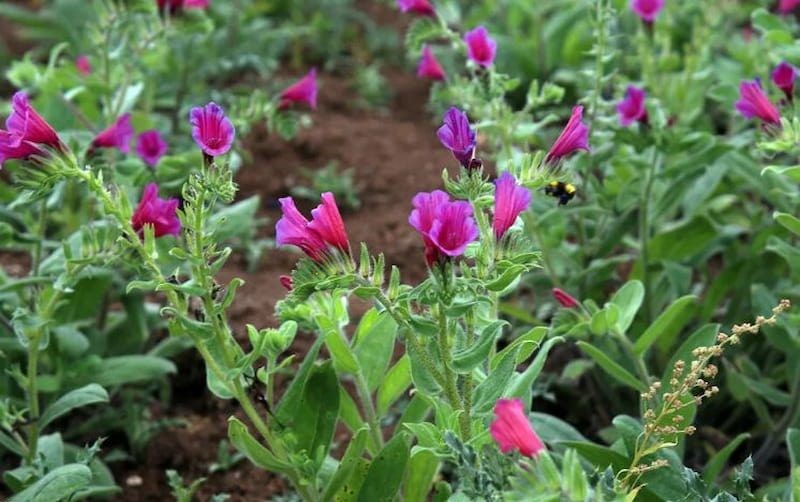Echium amoenum
Echium amoenum belongs to the family Boraginaceae and is a perennial Iranian domestic plant which grows wild in the mountains along a narrow strip of land in Northern Iran and the Caucasus. E. amoenum is a valuable medicinal herb which has been used in the treatment of inflammatory and infectious diseases for more than a millennium. E. amoenum is also used as a sedative in the traditional treatment of stress and anxiety. In Iran, it is a common tradition to brew portions of dried flowers of E. amoenum and drink it as infusion.

As far back as a millennium ago, Avicenna described the use of E. amoenum in various pharmaceutical preparations for the treatment of infectious and inflammatory diseases in his medical encyclopedia Canon of Medicine. Among other things, he describes a pharmaceutical formulation of E. amoenum’s ash as an effective remedy in the treatment of cold sores and oral infections. In Makhzan-al-Adwiya, written by Khorasani, also one of the great Middle Ages Iranian scientists and physicians, E. amoenum was described as a remedy for coughs, sore throats, colds, pneumonia and dyspnea.
Despite Avicenna’s detailed descriptions of approaches for more research on this medicinal plant, it was not until recent years that E. amoenum was investigated in a number of scientific studies. Even today, despite the great conviction and acceptance of the Iranian population of E. amoenum’s versatile and unique properties in the treatment of several different diseases, only a few thorough studies have been performed on this widely used medicinal plant. There are three different species of the genus Echium (Boraginaceae) in Iran, however Only E. amoenum has been found to possess valuable medical applications. In Iran, dried violet-red petals of E. amoenum, as well as the leaves, are used in a variety of medical contexts as anti-inflammatory, antibacterial, antioxidant, immunomodulatory, analgesic, anxiolytic, water-retardant and sedative herbal remedies.
Various phytochemical studies conducted on E. amoenum’s petals and seeds confirm the presence of various natural products such as antocyanins, flavonoids, saponins, unsaturated terpenoids, pyrrolizidine alkaloids, sterols and various fatty acids with significant amounts of γ-linolenic acid . Even the presence of some essential oils in smaller amounts, with the bright yellow δ-cadinene as the major compound, is demonstrated in E. amoenum .
The nutritional value of intake of E. amoenum tea has mainly been correlated to the fact that the plant is a rich source of mainly water-soluble antioxidants.
